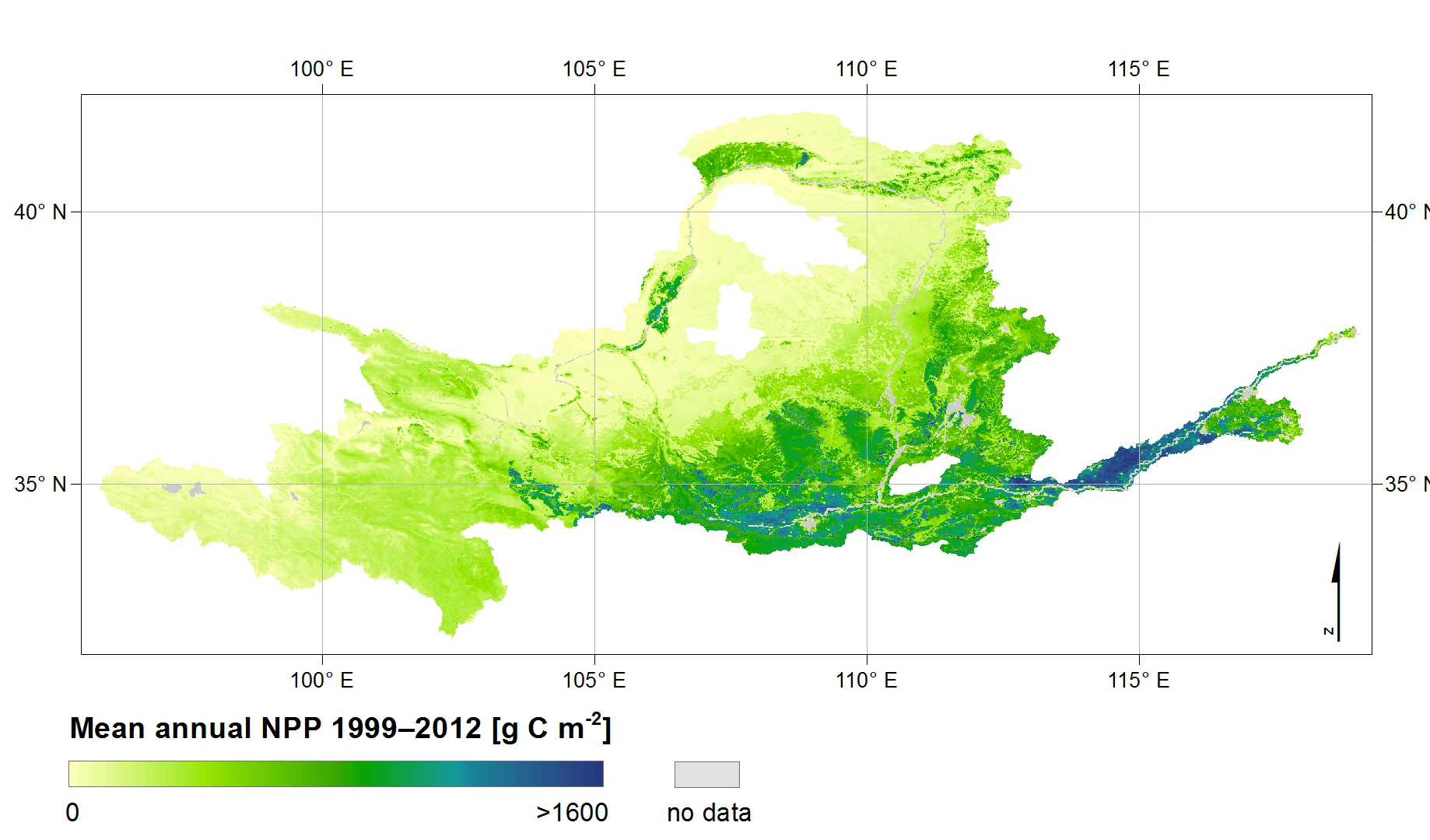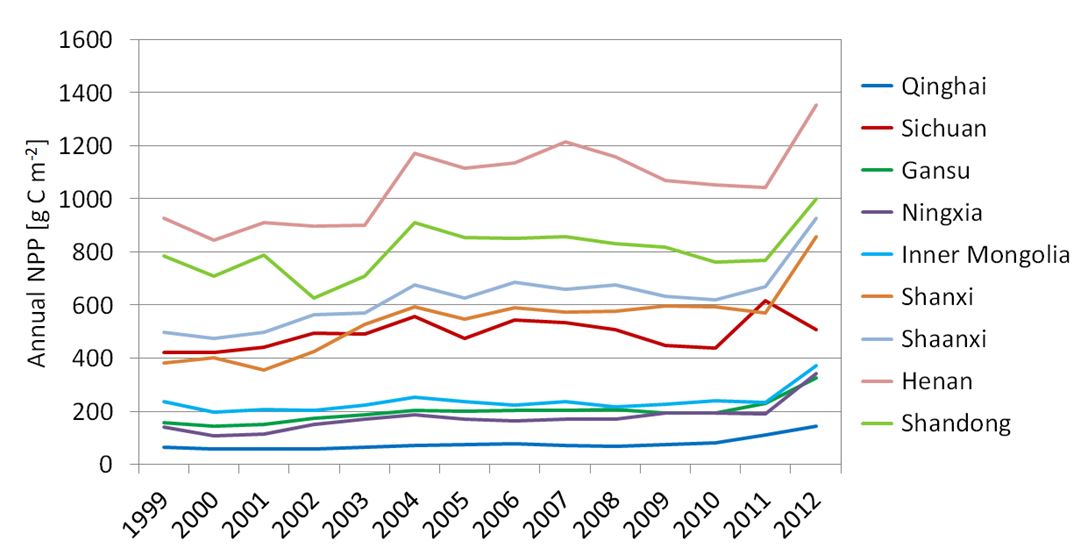Modeling Net Primary Productivity
Net Primary Productivity (NPP) describes the CO2 uptake by vegetation for a given area and time unit and thus provides information on plant growth, CO2 storage and CO2 release. The used model BETHY/DLR is a soil-vegetation-atmosphere-transfer (SVAT) model (Wißkirchen et al. 2013). It is based on meteorological and remote sensing derived input data. The temporal resolution of input data allows for daily modelling of NPP.
The map in Fig. 1 displays aggregated mean annual NPP values for the years 1999-2012 for the Yellow River Basin (Eisfelder et al. accepted at Springer). The Yellow River passes through nine provinces from river source at Qinghai-Tibet Plateau to river mouth into Bohai Sea - Qinghai, Sichuan, Gansu, Ningxia, Inner Mongolia (upper reaches), Shanxi und Shaanxi (middle reaches), Henan und Shandong (lower reaches). Fig. 2 shows an overview of annual NPP variability within the provinces of the catchment. Spatial differences in productivity of the vegetation is clearly visible. In upper reaches annual NPP sums up to 50-250 g C m-2, whereas the productivity of vegetation increases towards the middle and lower reaches. In Shandong, annual NPP has a mean value of about 800 g C m-2.

Fig.1: Mean annual Net Primary Productivity (NPP) for the Yellow River Basin 1999-2012 calculated with model BETHY/DLR (source: Eisfelder et al. accepted at Springer).

Fig.2: Annual NPP variability for 1999-2012 in the provinces of the Yellow River catchment




